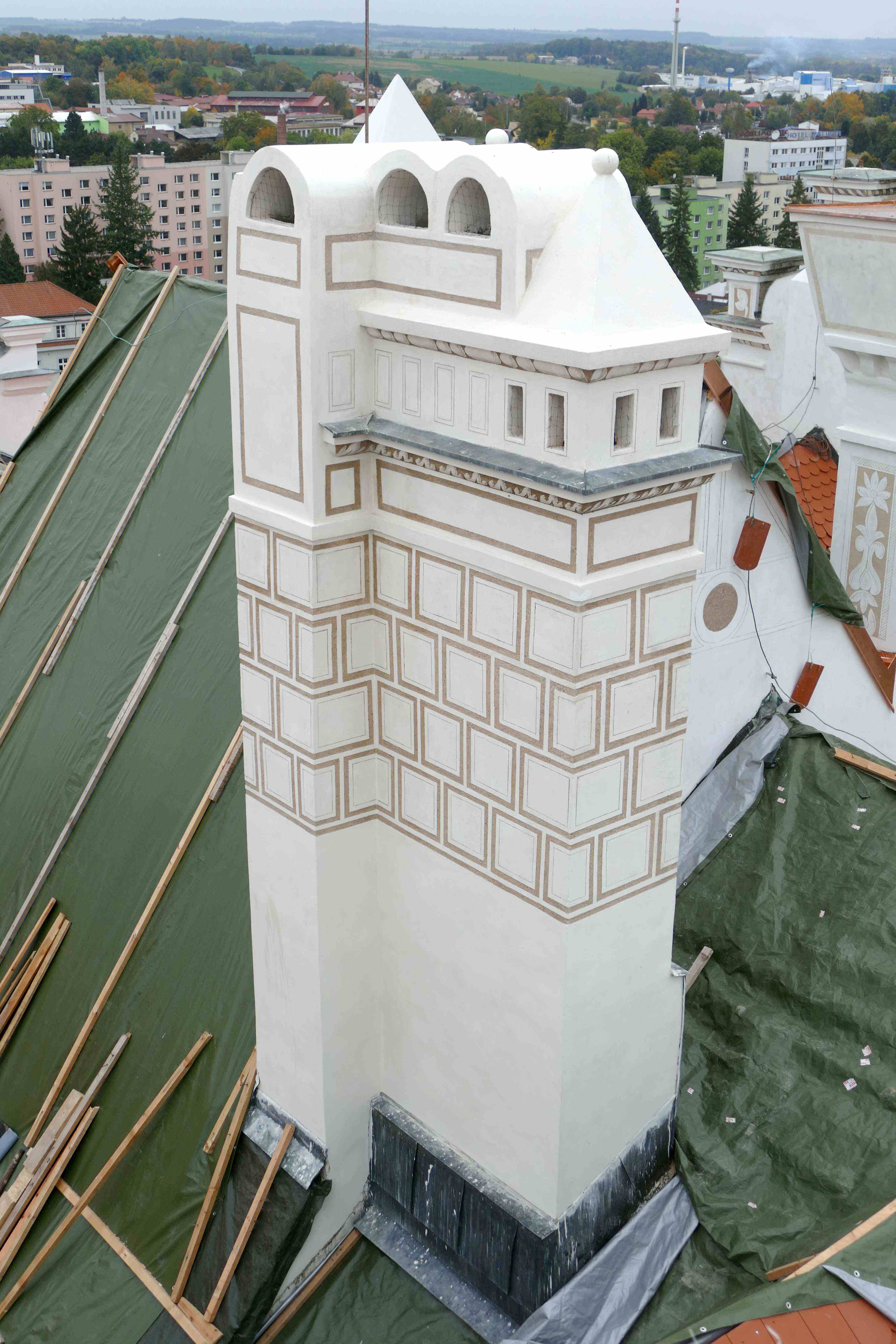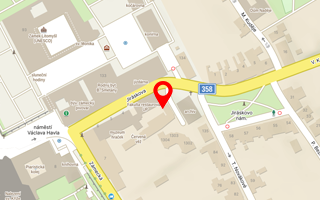MgA. Kateřina Krhánková
The castle, which has been a UNESCO World Heritage Site since 1999, is decorated with unique figural and ornamental sgraffito covering the outer facades, the inner courtyard and the chimneys. The sgraffito of Litomyšl Castle is one of the most important monuments in this technique in Central Europe (excluding Italy). Four chimney stacks with sgraffito decoration were the subject of restoration. The surface area of the sgraffito decoration of the restored chimneys is 132 m2.
The original Renaissance sgraffito decoration has been preserved in fragments on the chimneys, including the scratched-out date 1580 and the signature IAN MAIVALD.
In the 1980s, the Renaissance sgraffito was restored by a team of prominent artists of the time - O. Zoubek, V. Boštík, S. Podhrázský and Z. Palcr. The reconstructions from this renovation were based on the original Renaissance motifs, in the unpreserved places they were supplemented with the author's sgraffiti. Thus, the high value of the present decoration lies both in the Renaissance sgraffito and in the restoration-artistic input from the 1980s.
Due to exposure to extreme climatic fluctuations, the chimneys were in poor condition before the current restoration. The intonaco plaster was separated from the substrate, there were static and hairline cracks and large voids. The surface was completely eroded in exposed areas and extensively infested with microorganisms.
Consolidation and deep grouting were carried out as part of the conservation. The lime-cement plasters used in the 1980s appeared to be of good quality and their ageing and degradation adequate. Therefore, mortars with a similar composition - lime plasters with hydraulic additives - were used as complements. They were set with PP fibre for better adhesion.
The essential task was to develop a white coating that would be sufficiently resistant to extreme humidity and especially to biodegradation, while being compatible with lime plasters and coatings. In cooperation with Ing K. Bayer from the Department of Technology of the Faculty of Restoration and on the basis of previous research, a modified lime coating with inorganic pigments with grain sizes at the nanoparticle level was developed and tested. The addition of a combination of nano Ti-white and nano Zn-white increases the resistance of lime coating systems to microbiological colonization (especially by green algae) due to the photocatalytic and biocidal properties of the modified coating. For the time before the carbonation reaction of the lime takes place, the formulation has been strengthened with a 2% K9 dispersion. The dispersion has the function of a temporary binder and also increases water retention during application. At the same time, it can be assumed that the synthetic organic polymer (dispersion) is gradually degraded due to the photocatalytic action of the nano-pigments used. This leaves a purely inorganic lime coating. This is an important and innovative contribution to compatible and at the same time preventive and sustainable care, not only for sgraffito facades, which completely fulfils the principle of "retreatability" (repeatability of the restoration/preservation intervention).


